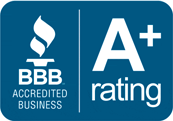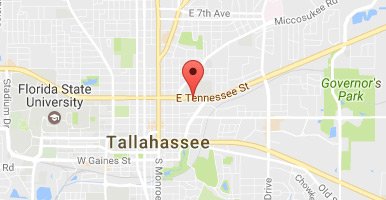- DUI
- Criminal Defense
- Florida DUI
- Traffic Offenses
- Drug Charges
- Marijuana Charges
- Violent Crimes
- Domestic Violence
- Temporary Injunctions
- Weapons Charges
- Theft Crimes
- White Collar Crime
- Juvenile Offenses
- Sex Crimes
- Violation of Probation
- Early Termination of Probation
- Seal or Expunge Criminal Record
- Criminal Appeals
- US Federal Offenses
- Misdemeanor Charges
- Felony Charges
- Co-Defendant Cases
- College Student Defense
- College Student Hearings
- FSU Students
- FAMU Students
- Florida Panhandle Arrests
- Extradition to Florida
- Bench Warrants / Warrants
- Emergency Bond Hearings
- Gambling Charges
- Drone Arrests
- Marsy’s Law
- UAS Infractions
- Introduction of Contraband
- Lying to Police
- Locations
- Case Results
- Our Firm
- Media
- Resources
- Blog
- Contact Us
How Do Police Test for Marijuana vs Hemp?
October 25, 2023 Don Pumphrey, Jr. Criminal Defense, Drug Charges Social Share
Marijuana and hemp have similar characteristics but are ultimately considered two different substances with different effects. These differences are what caused both Federal and State law to update the legislation regarding hemp. In short, you can be prosecuted for illegal cannabis but not hemp.
The Agriculture Improvement Act of 2018 first removed hemp from the Federal Controlled Substance Act. Also known as the 2018 Farm Bill, it classified hemp’s derivatives, extracts, cannabinoids, isomers, acids, salts, whether growing or not, as having a total delta-9 tetrahydrocannabinol (THC) concentration of less than 0.3% on a dry-weight basis.
The “State Hemp Program” (SB 1020) amended the definition of cannabis under Florida Statute Section 893.02 to exclude hemp. SB 1020 was also codified into Florida Statue Section 581.217 to provide the same definition as codified under federal law. Since hemp does not exceed the required THC level of 0.3%, it is considered legal in the state.
Although hemp is legal in Florida, marijuana is only legal to possess for individuals who have obtained a Florida medical marijuana card. Click here for the qualifying debilitating medical conditions required to obtain a Florida medical marijuana card. This means that if you are caught in possession of marijuana without a medical card, you could face criminal prosecution. Florida drug charges for marijuana include possession with the intent to sell, drug manufacturing, or drug trafficking.
Considering the many similarities between the substances, one may question: How police can tell the difference between illegal cannabis and hemp?
The Department of Agriculture and Consumer Services stated that hemp and illegal cannabis can look, feel, and smell the same. There is also currently no known way to distinguish between the two substances solely based on sight or odor. However, several methods of testing have been created by researchers and are starting to become available for distinguishing between the two. It is important to note that while methods have been developed, they can be too limited or expensive for all law enforcement agencies to obtain or use.
Testing Methods for Marijuana vs Hemp Investigations
The changes made through the 2018 Farm Bill resulted in forensic laboratories across the nation realizing the need for implementing quantitative analytic methods to distinguish hemp from marijuana. However, the National Institute of Standards and Technology (NIST) noted that most labs had little to no experience in quantitative drug analysis.
NIST has developed an integrated measuring services program to create and ensure the quality routine analysis in forensic labs to confidently distinguish between hemp and illegal cannabis. Their approach for seized cannabis samples takes on the following three steps:
- Robust analytical methods for range of techniques on a variety of instrumental platforms;
- Cannabis Standard Reference Materials (SRM) and Research Grade and Test Materials (RGTMs); and
- Cannabis Laboratory Quality Assurance Program (CannaQAP).
A QAP is a study mechanism like proficiency testing (PT), but without a pass or fail grade. CannaQAP was developed to help laboratories improve measurement comparability of cannabis substances. The studies offered through CannaQAP can determine the existence of cannabinoids (total CBD or THC levels), moisture, and toxic elements in a plant or other cannabis-containing material.
The following lists the current methods available to differentiate between hemp and illegal cannabis:
Presumptive Testing
Cannabis Typification Test kits can provide the ability to distinguish between legal hemp and illegal marijuana. These test kits require specific procedures to be followed. The sample procedures for utilizing these kits include the following:
-
- Medical marijuana should not be subjected to field testing;
- Suspected cannabis samples should be tested using the Duquenois-Levine Reagent System. If the test is negative, then there should be no further action taken; and
- If the sample is positive, then law enforcement should employ the new Cannabis Typification Test kit to determine if the substance is above or below (+ or -) 1% of THC. A positive test result indicates that the substance has a THC level over 1%, meaning it is well above the 0.3% legal hemp threshold.
Important: These procedures should not in any way hinder an individual’s right to possess, transport, or use medical marijuana.
Cannabis Breathalyzer
There are several versions of breath collection devices that are being marketed for detecting THC in the breath of cannabis users. The goal of a breathalyzer would be to identify and quantify compounds linked to recent cannabis use in a person’s breath. NIST’s Forensic Science Research Program for cannabis breathalyzers has three distinct aims:
- To identify compounds in the breath of cannabis users, including cannabinoids and other chemicals that have typically been ignored;
- To measure the chemical and physical properties of these compounds, in particular, their vapor pressures; and
- To quantify the performance of aerosol collection devices with numerical simulations and in the laboratory with breath surrogates.
NIST claims the ultimate positive impact to the criminal justice system regarding a breathalyzer would be to have a device that collects the accurate target compounds to reliably determine recent cannabis use. However, THC and other cannabinoids are non-volatile and chemically unstable. That creates a reliability challenge for the cannabis breathalyzer that does not exist for a standard alcohol breathalyzer.
Laboratory Testing
The Florida Department of Law Enforcement (FDLE) has quantitative testing capabilities available at the Jacksonville or Pensacola lab facilities. For a State Attorney to proceed with prosecution, testing of the illegal substance is typically required from an accredited laboratory. However due to the limited options for laboratories and their limited capacities, FDLE may only implement lab testing for cases that meet the minimum threshold for cannabis, such as with felony cases for drug trafficking.
To find out more about NIST’s tools for cannabis laboratory quality assurance, you can read their page here.
Odor Plus Standard for Probable Cause
There is currently no definitive universal probable cause search standard for illegal cannabis. However, a method that’s being used to help determine probable cause for conducting the search of a vehicle is the “odor plus standard.” Examples of the “odor plus standard” to determine probable cause include:
- Admission of possession of a controlled substance during initial contact OR denial of possession of Hemp;
- Visual observation of substance in plain view;
- Any other illegal activity or conduct;
- Conflicting or nonsensical statements by suspect or passenger;
- Signs of deceptions such as shaky hands, nervousness, and avoiding eye contact;
- Destroying, discarding, or distancing themselves from an object or substance;
- Signs of impairment such as slurred speech, bloodshot or watery eyes, or delayed responses;
- Large amounts of cash or currency bundled, rubber banded, or packaged in a manner consistent with illegal narcotics activity;
- Drug paraphernalia such as scales or baggies; or
- Weapons or firearms.
Although the odor plus standard is commonly used by the Office of Agriculture Law Enforcement (OALE), the Florida Highway Patrol, and other Florida agencies, it should require officers to obtain evidence beyond the mere scent of cannabis due to the legalization of hemp and medical marijuana.
Example Study: Inaccurate Labeling of Marijuana as Hemp
A study funded by the National Institute of Justice (NIJ) found that multiple hemp vendors were inaccurately labeling marijuana as hemp. Researchers pulled 53 hemp samples from five online commercial hemp sources. All five online sources had a declarative statement claiming, “All products contain less than 0.3 percent THC,” or “Products are lab tested to ensure the content is less than 0.3 percent.”
The researchers used an extraction procedure to separate the different chemicals in each sample, and then display them visually as chromatograms. Chromatograms are the constituents of a mixture that has been separated by being absorbed at different locations. The chromatograms can then be used to calculate how much of a chemical is found in the sample.
Of the 53 samples of hemp products, there were 49 recorded as labeled incorrectly. The study found that the 49 samples technically fit the federal classification of marijuana since they had a higher THC concentrate than 0.3%. Out of all the inaccurately labeled samples, all had a lower THC concentration than 1%, but still above the legal hemp threshold of 0.3%.
The study’s researchers addressed that while their results should not be indicative of the entire hemp field, it does show that illegal cannabis can be mistakenly labeled as hemp.
Example scenario: Let’s say police pull you over for a suspected drug DUI, with probable cause, and ask to search the vehicle. If you’ve consented and they find what you believe is hemp—but was really mislabeled illegal marijuana—they may arrest you for a drug charge. If the alleged hemp tests positive for illegal cannabis that meets the threshold for possession of marijuana with the intent to sell or distribute, you could be charged with a felony for something you were not even aware of.
In a 2019 interview with WTXL, Tallahassee criminal defense attorney Don Pumphrey explained that while you cannot be prosecuted without a test confirming the substance is illegal cannabis, you’re not in the clear until after the statute of limitations has passed.
Pumphrey gave an example scenario where police seize marijuana from a suspect but don’t have it tested until a year later. In this case, as long as the State is still within the statute of limitations, they can still prosecute you.
Where does this leave Florida, specifically?
Since the state has legalized medical marijuana but not recreational marijuana, it can be somewhat confusing. It is extremely important that you are familiar with Florida’s laws on drug charges if you find yourself being accused of illegal cannabis possession.
Arrested for a Drug Crime? Contact Pumphrey Law Firm
The State of Florida has become more lenient with cannabis over the years, specifically with the 2016 passing of legalized medical marijuana. Yet despite the improvements, Floridians are still being arrested for marijuana-related crimes. Considering the comparisons between hemp and illegal cannabis, it is not far-fetched to assume that law enforcement could arrest a person for a suspected marijuana offense—when the substance is actually hemp.
Even with the advances in technology and research aimed towards differentiating hemp and illegal cannabis, there is still a lot of room for improvement. Testing methods can be expensive and limited, which is why it is not currently widely accessible for all police. This leaves room for inconsistencies, and potentially arrests for a substance that is technically legal.
If you or a loved one has been arrested in Florida for a substance you believed was hemp, you should contact a defense attorney as soon as possible. You should not be prosecuted for a legal substance, whether the product was mislabeled or not.
Simple possession is still a crime in jurisdictions throughout Florida. While some cities and counties have decriminalized possession of marijuana, this remains the minority stance in the state. If a suspect meets or exceeds the threshold for possession with the intent to sell of marijuana drug trafficking, the consequences can be even more severe.
To avoid paying expensive fines and facing the possibility of imprisonment, contact Pumphrey Law Firm to represent your case. Our attorneys have worked on numerous marijuana cases, have a broad understanding of Florida’s marijuana laws, and will analyze your case to apply the best possible defense strategy. Contact our office today for a free consultation at (850) 681-7777 or leave us a message online.
Written by Karissa Key










